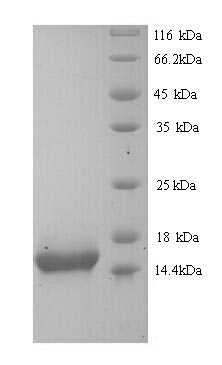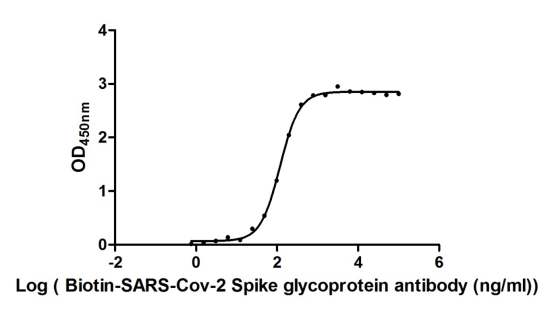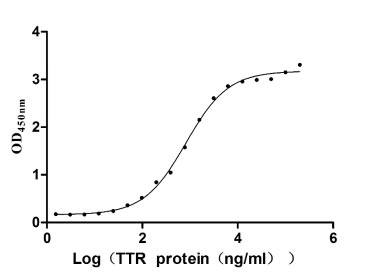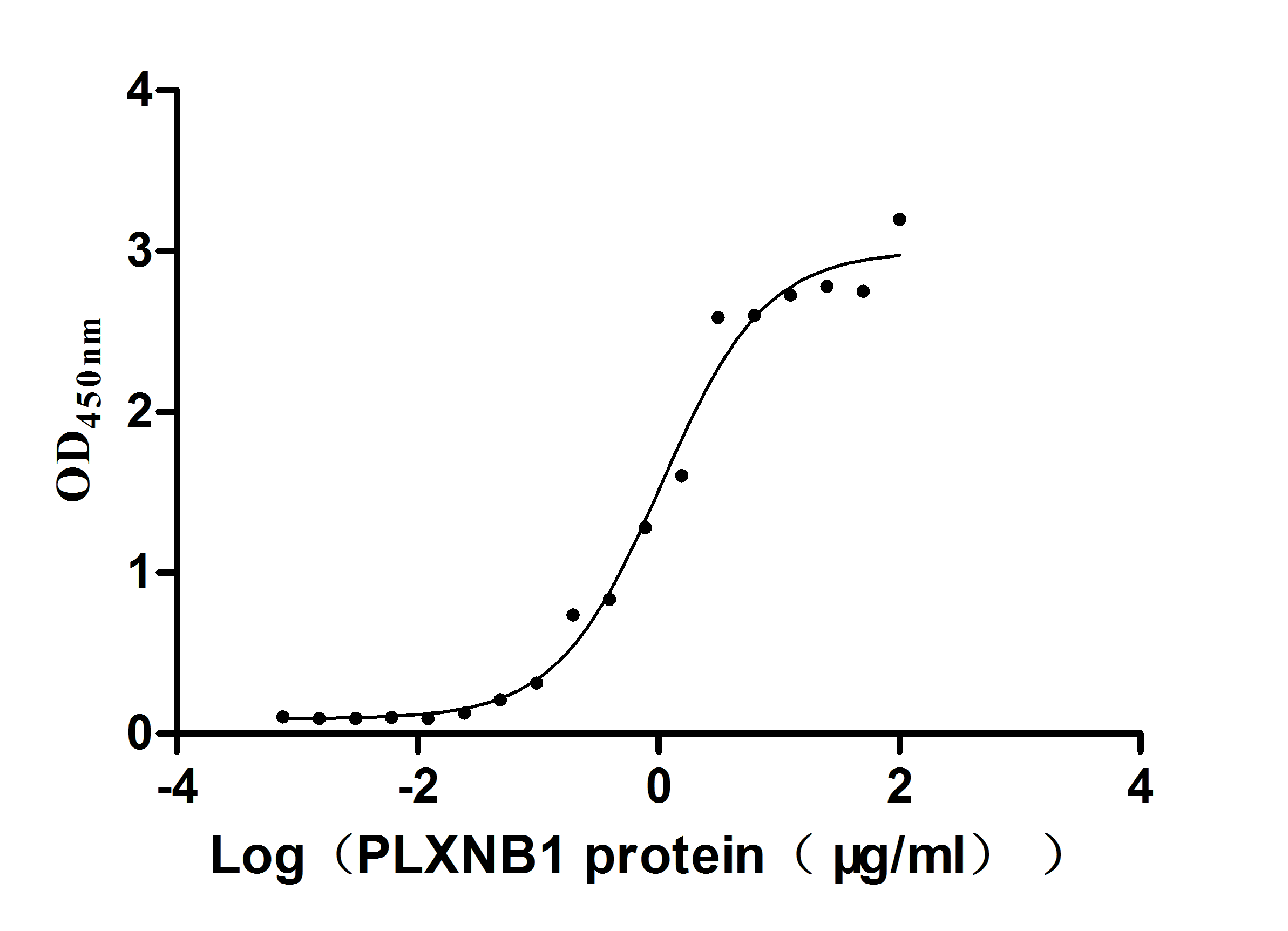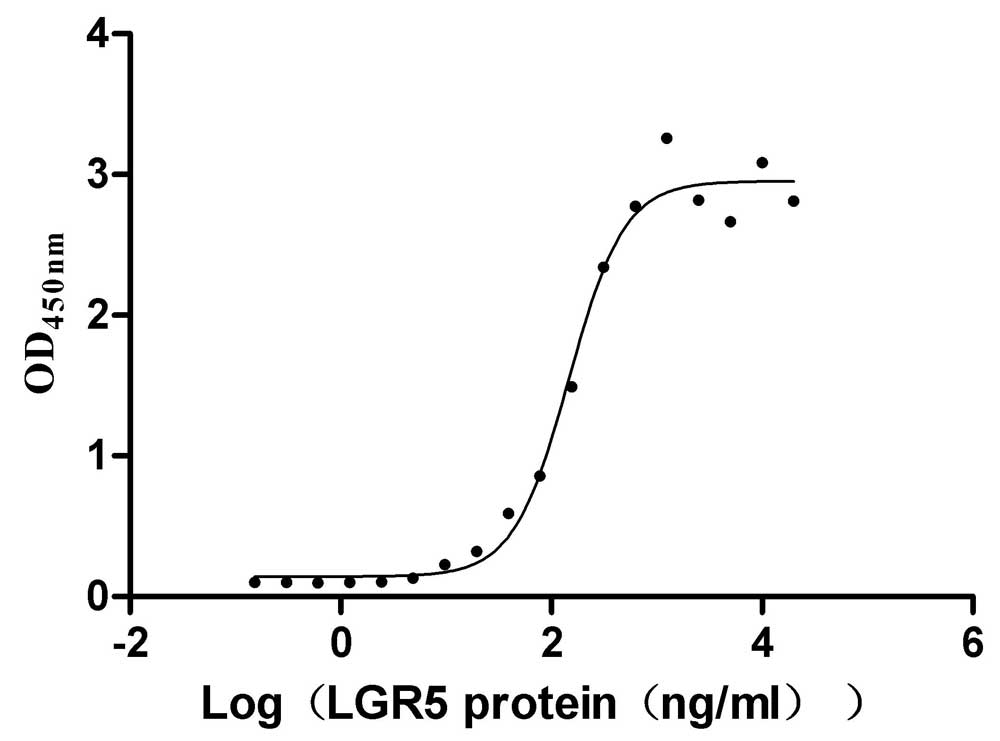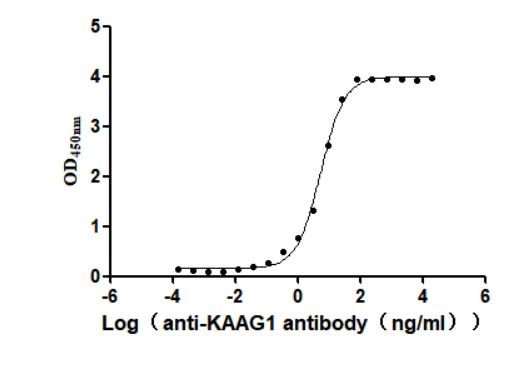Recombinant Human KeRatin, type I cytoskeletal 10 (KRT10), partial
-
中文名称:人KRT10重组蛋白
-
货号:CSB-YP012504HU1
-
规格:¥1500
-
图片:
-
其他:
产品详情
-
纯度:Greater than 90% as determined by SDS-PAGE.
-
基因名:
-
Uniprot No.:
-
别名:BCIE; BIE; CK 10; CK-10; Cytokeratin-10; EHK; K10; K1C10_HUMAN; Keratin 10; Keratin 10 type I; Keratin; Keratin type i cytoskeletal 10; Keratin type I cytoskeletal 59 kDa ; Keratin-10; Keratin10; KPP; KRT10; type I cytoskeletal 10
-
种属:Homo sapiens (Human)
-
蛋白长度:Partial
-
来源:Yeast
-
分子量:15.7kDa
-
表达区域:326-443aa
-
氨基酸序列EQLAEQNRKDAEAWFNEKSKELTTEIDNNIEQISSYKSEITELRRNVQALEIELQSQLALKQSLEASLAETEGRYCVQLSQIQAQISALEEQLQQIRAETECQNTEYQQLLDIKIRLE
Note: The complete sequence including tag sequence, target protein sequence and linker sequence could be provided upon request. -
蛋白标签:N-terminal 6xHis-tagged
-
产品提供形式:Liquid or Lyophilized powder
Note: We will preferentially ship the format that we have in stock, however, if you have any special requirement for the format, please remark your requirement when placing the order, we will prepare according to your demand. -
缓冲液:If the delivery form is liquid, the default storage buffer is Tris/PBS-based buffer, 5%-50% glycerol.
Note: If you have any special requirement for the glycerol content, please remark when you place the order.
If the delivery form is lyophilized powder, the buffer before lyophilization is Tris/PBS-based buffer, 6% Trehalose. -
储存条件:Store at -20°C/-80°C upon receipt, aliquoting is necessary for mutiple use. Avoid repeated freeze-thaw cycles.
-
保质期:The shelf life is related to many factors, storage state, buffer ingredients, storage temperature and the stability of the protein itself.
Generally, the shelf life of liquid form is 6 months at -20°C/-80°C. The shelf life of lyophilized form is 12 months at -20°C/-80°C. -
货期:Basically, we can dispatch the products out in 1-3 working days after receiving your orders. Delivery time may differ from different purchasing way or location, please kindly consult your local distributors for specific delivery time.Note: All of our proteins are default shipped with normal blue ice packs, if you request to ship with dry ice, please communicate with us in advance and extra fees will be charged.
-
注意事项:Repeated freezing and thawing is not recommended. Store working aliquots at 4°C for up to one week.
-
Datasheet & COA:Please contact us to get it.
相关产品
靶点详情
-
功能:Plays a role in the establishment of the epidermal barrier on plantar skin.; (Microbial infection) Acts as a mediator of S.aureus adherence to desquamated nasal epithelial cells via clfB, and hence may play a role in nasal colonization.; (Microbial infection) Binds S.pneumoniae PsrP, mediating adherence of the bacteria to lung cell lines. Reduction of levels of KRT10 keratin decrease adherence, overexpression increases adherence. Neither protein has to be glycosylated for the interaction to occur.
-
基因功能参考文献:
- The molecular diagnostics by the whole exome sequencing showed a novel de novo (c.1374-2A>C) mutation in the KRT10 gene responsible for the development of IWC (KRT10 defect was confirmed by immunofluorescent study). Concurrently, the m.14484T>C mutation in mitochondrial MTND6 gene (characteristic for Leber's hereditary optic neuropathy or LHON) was detected in patient, his mother and brother PMID: 28944608
- KRT10 gene mutation was present in all of the affected individuals, but absent in the five unaffected and 100 ethnically-matched healthy controls. PMID: 27212473
- Mutations in the highly conserved helix initiation motif of K10 were associated with mild or severe form of epidermolytic ichthyosis PMID: 26373619
- Report genetic/clinical spectrum of KRT10 mutations in keratinopathic ichthyosis. PMID: 26581228
- We present an autosomal dominant pedigree with epidermolytic ichthyosis resulting from a new heterozygous missense mutation in keratin 10. PMID: 26338057
- recombinant adenovirus-mediated overexpression of KRT10 and PTEN may improve the cisplatin resistance of ovarian cancer in vitro and in vivo PMID: 26125866
- findings provide structural insights into phenotypic variation in epidermolytic ichthyosis due to KRT10 mutations PMID: 26176760
- The diagnosis of ichthyosis with confetti was confirmed by the identification of 2 previously unreported mutations in intron 6 and exon 7 of KRT10. PMID: 24626314
- We present the spectrum of clinical variability of ichthyosis with confetti in 6 patients with confirmed mutations in KRT10. PMID: 25210931
- Case Report: extensive postzygotic mosaicism for a novel keratin 10 mutation in epidermolytic ichthyosis. PMID: 24096702
- Data indicate that KRT10 is a downstream molecule of PTEN which improves cisplatin-resistance of ovarian cancer cells. PMID: 24434152
- Most of the orthokeratotic dysplasia constituent cells were immunopositive for keratin 10, but not for keratins 13, 17 or 19. PMID: 22734720
- Molecular mimicry between HSP 65 of Mycobacterium leprae and cytokeratin 10 of the host keratin play the role in pathogenesis of leprosy. PMID: 23121977
- Pneumococcal ligands K10, laminin receptor and platelet-activating factor receptor are elevated in aged lungs and contribute to the enhanced susceptibility to pneumonia. PMID: 21615674
- mapping and identifying disease-causing mutations in gene encoding KRT10 in ichthyosis with confetti; high frequency of somatic reversion suggests revertant stem cell clones are under positive selection and/or rate of mitotic recombination is elevated PMID: 20798280
- Data show that TIMP-1 and cytokeratin-10 were identified as 2 newly synthesized secreted proteins in PMID: 19904223
- Expression was altered in oral lichen planus lesions PMID: 19776502
- Mutations in codon 156 of K10, i.e. R156S, R156P, R156H were found in epidermolytic hyperkeratosis. PMID: 12234709
- cytokeratin 10 molecules were shown to be exposed on the surface of both desquamated nasal epithelial cells and keratinocytes; Staphylococcus aureus clumping factor B (ClfB) was shown to bind to cytokeratin K10 from the desquamated nasal epithelial cells PMID: 12427098
- Impaired NF-kappa B activation and increased production of tumor necrosis factor alpha is observed in transgenic mice expressing keratin K10 in the basal layer of the epidermis. PMID: 12566451
- normal cornified cell envelope is formed during the process of human epidermal keratinization, even if the suprabasal keratin filament network is disrupted as with this particular K10 mutation, M150T in BCIE PMID: 14705805
- cytokeratin 10 may have a role in progression of head and neck squamous cell carcinoma. PMID: 15254692
- We demonstrate that a recessive mutation in KRT10 leading to a complete human K10 knockout can cause EHK PMID: 16505000
- Candidate autoantigen in chronic, antibiotic-resistant Lyme arthritis. PMID: 16888010
- Squamous cell carcinoma (SCC) in mature cystic teratoma (MCT) expressed CK10 less frequently, but CK18 more frequently. SCC in MCT may be derived from metaplastic squamous epithelium. PMID: 17542994
- Mild recessive bullous congenital ichthyosiform erythroderma due to a previously unidentified homozygous keratin 10 nonsense mutation. PMID: 18219278
- siRNA for PRKD1 resulted in reduction of mRNA levels of PKD1, altered cell phenotype and promotion of keratinocyte differentiation, demonstrated by increased expression of involucrin and K10 mRNAs PMID: 18259765
- CK10 alone, or in combination with CK19, can be a novel predictor for poor prognosis of hepatocellular carcinoma patients after curative resection. PMID: 18559605
- EHK is an autosomal dominant disorder of keratinization, caused by mutations in either the KRT1 or KRT10 genes. Our patient presents EHK with palmoplantar involvement and KRT10 mutation. PMID: 19443303
- premature termination codon of KRT10 maybe involved in recessive epidermolytic hyperkeratosis PMID: 19474805
- Infection by HPV may alter the differentiation status of the epidermis, leading to delayed or absent expression of cytokeratin 10. PMID: 19515043
显示更多
收起更多
-
相关疾病:Epidermolytic hyperkeratosis (EHK); Ichthyosis annular epidermolytic (AEI); Erythroderma, ichthyosiform, congenital reticular (CRIE)
-
亚细胞定位:Secreted, extracellular space. Cell surface.
-
蛋白家族:Intermediate filament family
-
组织特异性:Seen in all suprabasal cell layers including stratum corneum. Expressed on the surface of lung cell lines.
-
数据库链接:
Most popular with customers
-
Recombinant Severe acute respiratory syndrome coronavirus 2 Spike glycoprotein (S), partial (Active)
Express system: Mammalian cell
Species: Severe acute respiratory syndrome coronavirus 2 (2019-nCoV) (SARS-CoV-2)
-
Recombinant Human Retinol-binding protein 4 (RBP4) (Active)
Express system: Mammalian cell
Species: Homo sapiens (Human)
-
Recombinant Human Plexin-B1 (PLXNB1), partial (Active)
Express system: Mammalian cell
Species: Homo sapiens (Human)
-
Recombinant Human R-spondin-1 (RSPO1), partial (Active)
Express system: Mammalian cell
Species: Homo sapiens (Human)
-
Recombinant Human Kidney-associated antigen 1(KAAG1) (Active)
Express system: Baculovirus
Species: Homo sapiens (Human)

